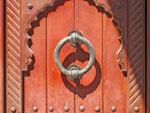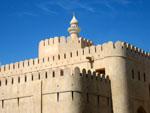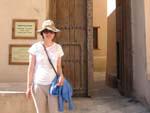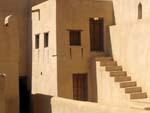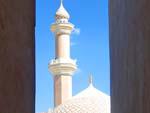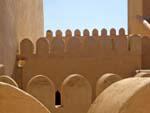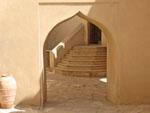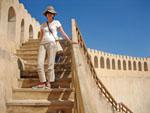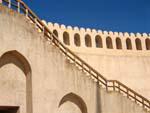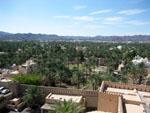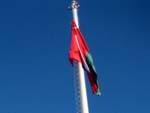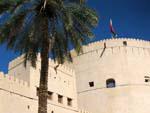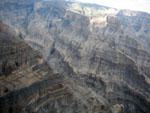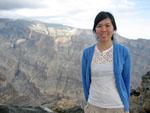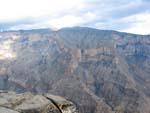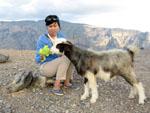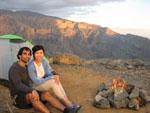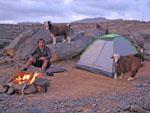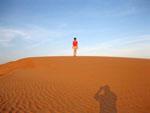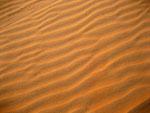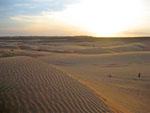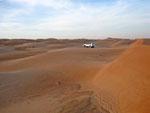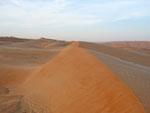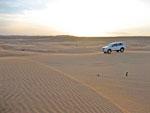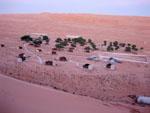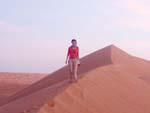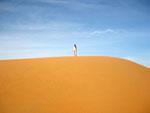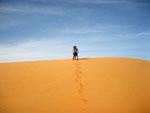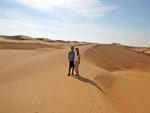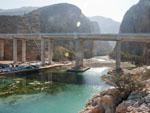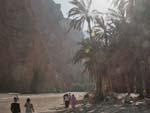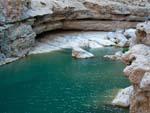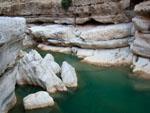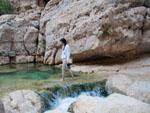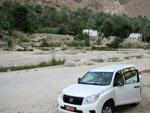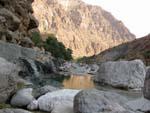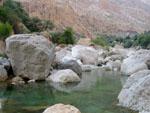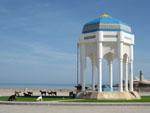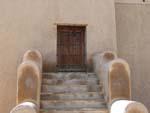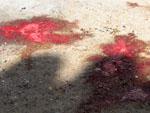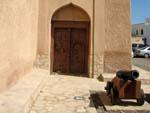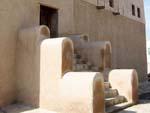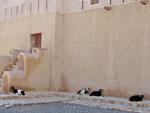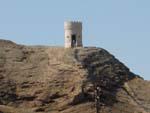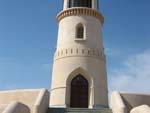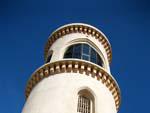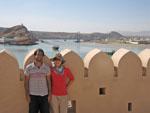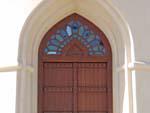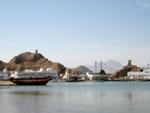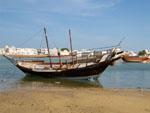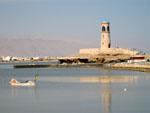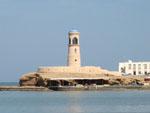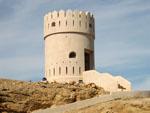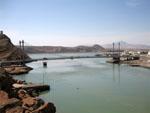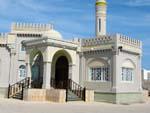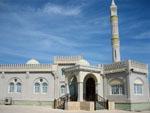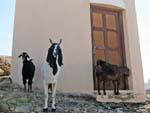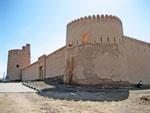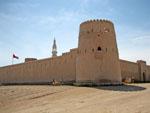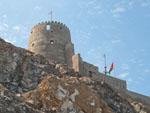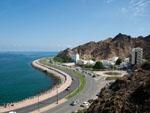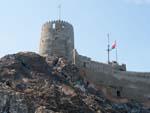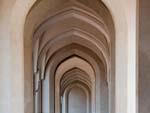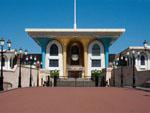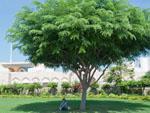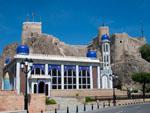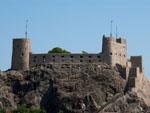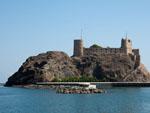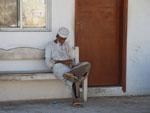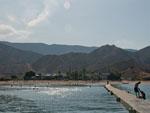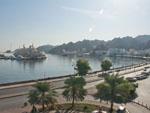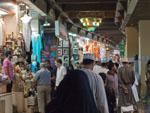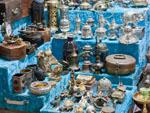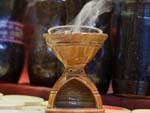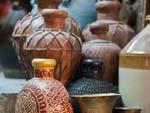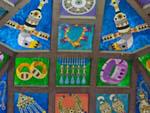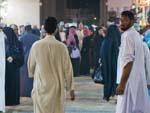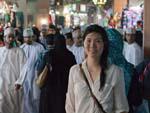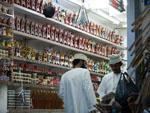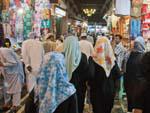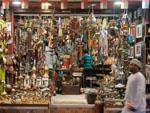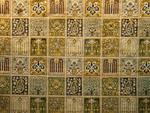Our planned travel itinerary was a loop from Muscat to Sur to Wahiba Sands to Nizwa and back to Muscat. On our fourth day we had woken up in the dunes of Wahiba Sands where we finished off the desert adventure with some mild ‘dune bashing’. We left the desert and headed to our next destination, Nizwa.
thydzikgooglemap(http://sonyaandtravis.com/maps/oman-2011-wahiba-sands-to-nizwa-to-jebal-shams.xml)
Nizwa
Nizwa is one of the larger cities in Oman, and also one of the oldest. It was once a centre of trade, religion, education and art. I was keen to visit the animal souq there as I had heard bedouin women trade their goats and other livestock there. Unfortunately, much of the souq was closed due to the Eid holiday, and in fact most of the city was closed. We did however manage to enter the Nizwa Fort (which is one of the most amazing looking forts we’d seen), and view the Nizwa Mosque. Some of the shops in the souq were open allowing us to observe the wonderful silverware and handicraft the city is famous for. We had some shawarmas at a very local restaurant and then the real adventure began!
thydzikgooglemap(http://sonyaandtravis.com/maps/oman-2011-nizwa.xml,s)
Jebel Shams
We headed to Jebel Shams, the highest mountain peak in Oman at about 3000 metres. It is part of the Al Hajar mountain ranges. During our research we had read that the peak is frequently visited and camping on the plateau nearby is quite popular. After a winding drive up the ranges we stopped at a few scenic look out points. There were plenty of mainly Indian expat families doing day trips from Nizwa or Muscat. One of the main attractions is the beautiful gorge which is often described as the Grand Canyon of Arabia. Since we had a 3WD we decided to explore the off road tracks. It was a bit cooler on the ranges and we wondered if our plan to camp was the best idea. Nevertheless we were intent on doing it.
After driving to a few different spots and meeting many of the local children (who were bold enough to ask for sweets – I gave them the rest of our Haldiram’s burfi – an Indian sweet, and mandarins) we found a nice spot on the edge (but not to close) of the cliff… surrounded by some rocks. It seemed to have been used as a campsite before as a few camp fires were still visible. We setup our tent and Travis used his skills from watching various survival shows – to set up a campfire. To our luck one of the local kids had a box of matches (which we had forgotten to bring with us) which he sold to us for 1 OMR – a bit steep but he could sense we needed it. Value selling, I guess. We returned it to him the following morning anyway!
We had set up our tent and the campfire and by then were eating our takeaway biryani when some Indian families looking around stopped by to make use of our fire. They were surprised to find out that we were camping there that night and keen to look inside our tent (perhaps they had not seen one before?). A number of mountain goats had appeared (they have a good sense of smell), interested to see what we could offer them. As the sunset we gathered more firewood and watched as the last of the sun shone on the gorges eliminating them in beautiful red and orange colours.
That night we slept, well, relatively peacefully. The wind was quite strong and it did get a little chilly – thank goodness for sleeping bags! In addition there were some youths parked at another lookout from us and we could hear them partying all night. All in all camping on Jebel Shams is definitely fun experience!
thydzikgooglemap(http://sonyaandtravis.com/maps/oman-2011-jebal-shams.xml,s)




































































































